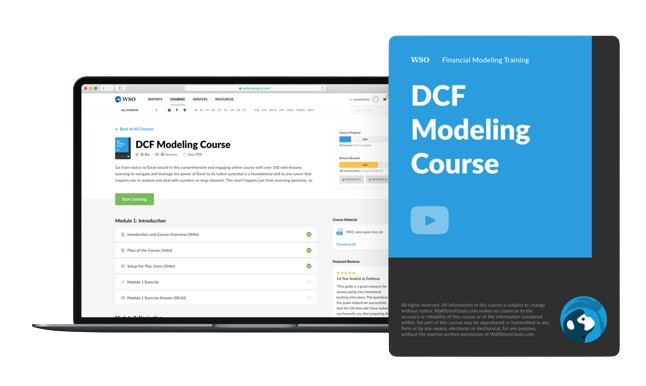Gordon Growth Model
Stock valuation method that is used to determine the intrinsic value of a stock, considering the sum of the present value of the future dividend payments
What is the Gordon Growth Model?
The Gordon Growth Model (GGM) is a stock valuation method that is used to determine the intrinsic value of a stock, considering the sum of the present value of the future dividend payments.
GGM ignores the state of the market at the present time and focuses on determining the intrinsic value of the stock, assuming a constant rate of growth for future dividends. It is also considered a form relating to the Dividend Discount Model (DDM).
Sometimes investors wonder when buying a share of stock if they are overpaying. Therefore, it is likely that they perform a valuation method such as the Gordon Growth Model to determine the well-being of their investment.
This method was published by Professor Myron J. Gordon, to value stocks or businesses.
Principally, it assumes an infinite series of future dividends with a constant growth rate in perpetuity that lasts forever, and it is mostly used for businesses with fixed dividend growth rates.
Gordon Growth Model Explained
The Gordon Growth Model values the present value of the stock price based on an infinite stream of future dividends.
The variables used to calculate the GGM are the dividend per share (DPS), the required rate of return (r), and the dividend growth rate per share (g).
Usually, this model is easy to use because it only includes three variables, and they are found in a company’s financial reports.
For the most part, this model attempts to value a stock based on the expected market returns and dividend payouts. Also, it will certainly help investors to make decisions when comparing stocks.
In this regard, after conducting this method, if the value obtained is lower than the market price of the share, the stock is considered overvalued.
Whereas, if the obtained value is higher than the current market price of the share, the stock is considered undervalued.
Companies are recommended to use this model when dividends grow at a constant rate, earnings keep pace with dividends, and the required rate of return is higher than the growth rate.
However, companies with high growth and changing dividends payouts are not recommended to use this model and should avoid it.
This method does not consider the market value of the company and the current economic condition. It only considers the growth of dividend payments. Therefore, the model can be used for companies of different sizes.
Nevertheless, based on the Gordon growth model there is the multistage dividend discount model, which includes the two-stage, and three-stage models.
- The two-stage Gordon growth model can be used when a company has unstable growth in the first stage and stable growth in the second stage.
The formula is similar to the Gordon growth model, it only includes the growth rate (g) for the second stage.
- The three-stage model includes a part of higher growth followed by positive or negative growth, then the growth rate stabilizes for the lifetime of the company.
Gordon Growth Model Formula
The model is computed as follows:
P = D1/(r–g)
Where:
- P = The present value of the stock
- D1 = The value of next year’s expected dividends
- r = required rate of return (The cost of equity capital ke of the company)
- g = expected growth rate
Ke =Rf +i(E(Rm)-Rf)
Where:
- Rf = the base return (risk-free rate)
- i = measure of stock risk
- (E(Rm)-Rf) = is the market risk premium
Dividends per share are the yearly payments made by a corporation to its common equity holders, whereas the required rate of return is the minimum return that an investor anticipates getting on their investment.
The expected growth rate is the amount by which the rate of dividends per share increases each year.
To clarify this formula:
- When the growth rate increases, the denominator will decrease, and as a result, the present value will increase, and vice versa. The rise in growth indicates an increase in dividends paid.
- When the required rate of return increases, the denominator will increase. As a consequence, the present value of the stock will decrease, and the other way around.
- When the DPS is unknown, the best way to compute it is by multiplying the current dividend by the growth rate, D0(1+g).
In this situation, the formula that is to be used is the following:
P = D0(1+g)/(r–g)
Example of the Gordon Growth Model
Overvalued stock example
To illustrate, let’s assume a company’s stock is listed at $220 per share. The company’s required rate of return (r) is 7%, and it is willing to pay a $4 dividend next year, while investors expect the growth (g) to be 5% annually.
The intrinsic value is computed as follows:
P = $4/(7%-5%) = $200
The above calculation indicates that the present value of the stock equals $200, while the market value of the stock is $220.
This means that the stock is trading above the intrinsic value with a $20 difference. Therefore, considering the Gordon Growth Model, the stock is considered overvalued.
Undervalued stock example
Let’s assume a company stock is currently trading for $70 per share. The company’s required rate of return (r) is 8%, and the dividend per share (DPS) that will be paid next year is $3, with an expected growth (g) of 4% annually.
The intrinsic value is computed as follows:
P = $3/(8%-4%)= $75
The above calculation indicates that the present value of the stock equals $75, while the market value of the stock is $70. Furthermore, the stock is trading below the intrinsic value with a $5 difference. As a result, the stock is considered to be undervalued.
Dividend next year not given example
Suppose a company's stock price is $150, and the required rate of return is 6%. The growth rate is 4%, and the current dividend per share is 3$.
To calculate the dividend next year, we use this formula:
D1 = D0 (1 + g) = ?
D1 = $3 (1 + 4%) = 3.12
Now that we have the value of next year’s dividend (D1), we can proceed with the GGM:
P = $3.12/(6%-4%) = $156
In this example, the intrinsic value is higher than the market value. Therefore, the stock is considered undervalued.
FAQs
The Gordon Growth Model is one of the most used methods to calculate the value of a share.
The aim of this model is to calculate the current value of the stock without taking into consideration the market conditions, and it is done by discounting all future dividend payments to their present value.
The main limitation of this model is that it assumes a constant rate of growth. Yet, it is not frequent for companies to experience constant growth.
Another problem regarding this model is that when the required rate of return is lower than the growth rate, the obtained value will be negative.
Also, the value per share approaches infinity when the growth rate and required rate of return are both equal.
The GGM includes only three variables, which makes it easy to calculate. The numerator contains only the dividend per share (DPS). Then for the denominator, the required rate of return (RoR) minus the growth rates of the dividends (g).
GGM is useful when the growth is constant for an indefinite time. It is extremely easy to understand and obtain the inputs from the company’s financial statements, and this is why it is widely used to value a company’s stock.
Researched and authored by Elie Zakhour | LinkedIn
Free Resources
To continue learning and advancing your career, check out these additional helpful WSO resources:




or Want to Sign up with your social account?